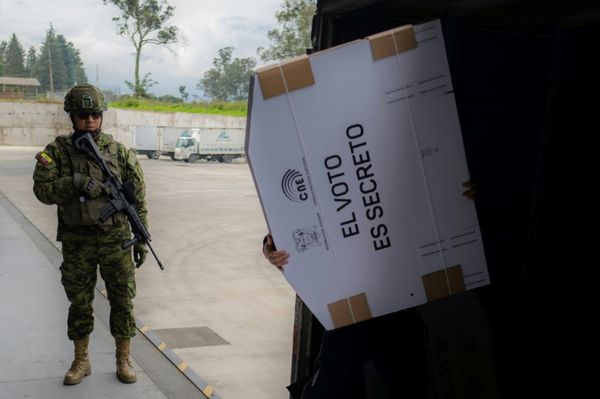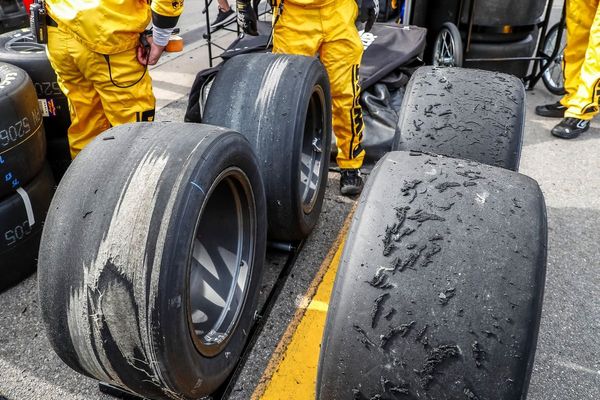
Since President Donald Trump’s sweeping automotive tariffs were announced, we’ve seen plenty of denial, anger and bargaining. Depression is setting in. With the other four stages of grief sorted, let’s focus on acceptance. Accept, at least for argument’s sake, that an auto-market contraction will be a result of this trade war.
A war, by definition, has winners and losers. So who wins here?
(Welcome to Power Moves, an InsideEVs column on the winners and losers of the EV race. Every other week, I explore how one of the world’s most vital industries is navigating its biggest shake-up ever. Newsletter subscribers get it delivered directly to their inbox a day before it goes on the site, so if you want early access, sign up below. Deputy Editor Mack Hogan)
The Biggest Loser: Europe
I’m going to try not to turn this into a geopolitics newsletter, but the intersection of global affairs and cars is where I like to hang out. From either lens, boy, is it a bad time to be a European player.
Germany’s overall economy contracted again last year, a misfire that could bring the economic engine of Europe sputtering to a halt. Falling auto sales were already a problem. Now, with Volkswagen highly dependent on China and with minuscule manufacturing presence in the U.S., the pain will get much, much worse.
“It’s very bad,” JATO analyst Felipe Munoz said of VW’s current predicament. “Volkswagen Group is mainly selling cars from Mexico and Europe [in the U.S.], and their own presence in the U.S. is with three products.”
Those would be the Atlas and Atlas Cross Sport large SUVs and the ID.4 electric crossover. Hardly enough to build a brand on. Mercedes is less exposed, with some U.S. production, but its U.S.-built products rely almost entirely on imported parts. Volvo’s South Carolina plant is similarly dependent on foreign parts. BMW SUVs get up to 32% of their parts from the U.S. and Canada, but the South Carolina-built X3 best-seller is only 9% American, per federal filings. Yowch.

Other regions face similar exposure. But if the world retreats to a non-globalized, tariff-protected economy, it’s European automakers that stand to lose the most. Europe’s market is relatively unprofitable, regulated and shrinking. That’s not a market you want to rely on.
The Structurally Weak
When you think of struggling automakers, I don’t blame you if Stellantis is first to mind.
Chrysler seems to be some sort of cursed totem, dooming whatever corporate hegemon controls it at the time. Yet the picture for the latest holding company is not as grim as you may think, because in terms of debt to cash, Stellantis is doing quite well. As my friend Alex Dykes from Auto Buyers Guide pointed out, it’s sitting on nearly $40 billion of cash as of its Q4 2024 financial report, with far less long-term debt than many competitors.

Yet its cash pile is $9 billion smaller than it was last year, which is why I still put the company in the “structurally weak” category. It can afford to lose some money, but given that it was losing money before things got bad, that’s going to make a protracted slowdown brutal.
Their position reminds me of a recent quote I heard about another automaker: “We don't have a cash problem," incoming Nissan CEO Ivan Espinosa told me. Instead, the company had a “cash flow problem.” The company has the same cash flow issue as Stellantis, but with a worse balance sheet. With about $6 billion on hand and $6 billion in debt due soon, Nissan cannot endure prolonged pain.
I’d lump Mazda in here too, as almost every car it sells is imported and it’s too small to soak up tariff costs, build a competent EV and keep its existing products fresh. Pick one, at best.

The Middle Ground
General Motors does plenty of manufacturing in the U.S., but it is more exposed to Mexico and Canada than Ford. Its recent EV growth has all been on the back of the Equinox and Blazer EVs, both of which are built in Mexico. Most worryingly, some of its cash-cow trucks come from South of the border. There’s no going concern here—Mary Barra’s GM is profitable and competitive—but you’re going to see a contraction if the tariffs hold.
Hyundai is also strong enough to endure, but facing serious headwinds. The company imports most of what it sells from South Korea. It's swallowing the cost at first, in no small part because it’s sitting on tens of billions of cash, has the backing of a giant conglomerate that builds more than cars and knows the South Korean government will lend a hand.
Yet it has only promised to do so until June. The company did sense the prevailing winds and bet big on the U.S. But with domestic EV production just getting started and its new American steel plant far off, it’ll pay a price in the short term.

The Not-Quite Winners
All of these companies will still likely see profits fall if tariffs hold, so the aren't pure "winners." But Tesla, Toyota, Honda and Ford all seem well-positioned.
Tesla has the least exposure to full-vehicle import tariffs, as it builds everything it sells in the U.S. within our borders. All of its U.S.-market cars use over 60% U.S. and Canadian parts. (Note that federal filings don't distinguish between U.S. and Canadian parts content, a relic of a bygone era where they were seen as mostly interchangeable).

Tesla still faces some risk, mainly from retaliation and increased industry demand for U.S. parts and labor driving up its own costs, but it’s well-blanketed. The real risk to its business comes if Trump rolls back emissions standards and manages to kill California’s zero-emission vehicle rules. That’d kill Tesla’s regulatory credit business here, which is a major profit center.
If the administration doesn’t cancel the regulatory credit system, it’ll be a headache for Honda and Toyota. Both make most of their most profitable cars here, but only sell EVs made abroad. Since they have to sell a certain number of EVs under current rules, they are going to lose a lot of money trying to move their EVs.

Still, these Japanese giants have brought so much production to North America. Unfortunately for Toyota, though, many versions of the Rav4—America’s best-selling non-truck—are built in Canada. Bully for Honda, which builds the CR-V in the states. Toyota can tank it, too, as it’s got one massive cash reserve to weather any temporary disruption.
Finally, while Ford is struggling to build profitable EVs, it builds its most profitable models stateside. It may have some debt and some exposure—the Mustang Mach-E, Maverick and Bronco Sport are Mexico-made—but it’s not as hosed as its rivals.
The best-case scenario, then, is that you get through this without losing too much money. Even still, expect these tariffs to impact a lot of long-term investments, including in EVs. Europe is already weighing looser emissions standards. Trump wants to get rid of ours altogether. And with a 25% tariff on anything imported and no tax credit to support EVs, it’s not like the American consumer is going to be lining up to keep leasing Prologues.
So whichever company survives or thrives, the biggest loser will be consumers who want reliable, affordable, clean transportation.
Contact the author: Mack.hogan@insideevs.com.







